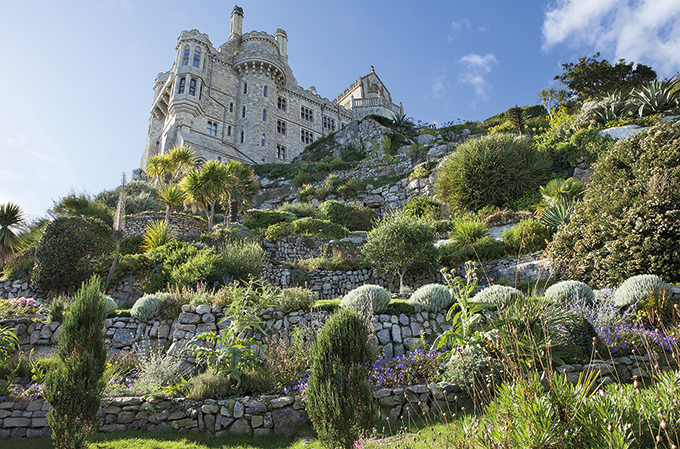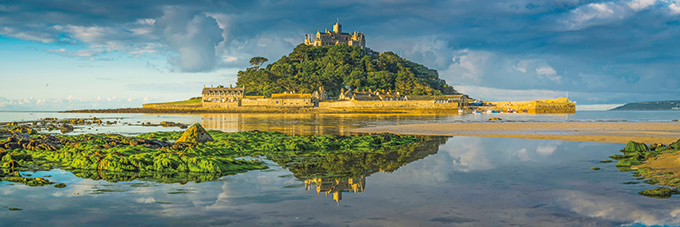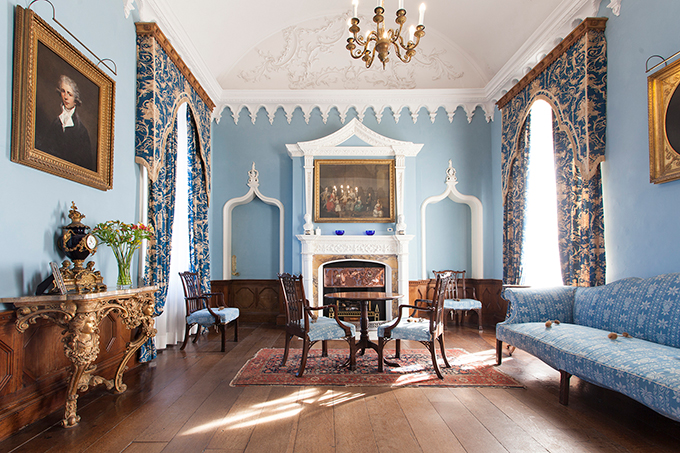
It’s only a few minutes from mainland Cornwall, but the tiny island of St Michael’s Mount seems like a world away
St Michael’s Mount, a tiny island 500 metres off the coast of Cornwall, was once home to an 18-foot giant called Cormoran. This was back in the 6th century, before the days of the castle, which now dominates its rocky terrain.
The beast spent all day in his cave, surrounded by treasures stolen from his human neighbours, and feasted on cows and children. Then, one day, a young farmer’s son named Jack plucked up the courage to take him on, knocking the giant over the head with an axe and saving the residents from a life of terror.
The unimaginative might scoff at this tale, but such things are quite believable when you come across the island. Myths and magic seem to swirl in its waters. History and heritage lie deep in its strata. Even its climate is unlike the mainland. Despite the wind, the Gulf Stream moderates the cold and the rock absorbs heat, encouraging all sorts of exotic plants to thrive on its terraces.

After the giant, the residents weren’t safe for very long, with many a knight and an earl squabbling over the mount’s ownership. By the time of the Norman Conquest in 1066, it was run by the monks of Mont St Michel in Normandy, who constructed the church and priory a century later – the ruins of which lie at the core of the castle today. From the 12th century, when Henry La Pomeray captured the island by disguising his men as pilgrims, to the Civil War, when Royalists fought off Oliver Cromwell, the island has seen many a battle. Things didn’t really settle down until the 17th century, when the mount came under the ownership of Colonel John St Aubyn, whose descendants, the Lords St Levan, remain.
The most recent threat occurred during the Second World War, when the mount was fortified against potential invasion. Three pillboxes survive to this day. Joachim von Ribbentrop, the former Nazi Foreign Minister, is said to have earmarked the mount as his home. The Allies held tight. In the Fifties, the 3rd Baron St Levan gave most of St Michael’s Mount to the National Trust. The St Aubyn family holds a long lease to live there.
The buildings have also undergone upheaval, the unfortunate result of a couple of dramatic earthquakes. One in the 13th century destroyed the original church. The current, more youthful church dates from the 14th century. Worse was to come in the 18th century, when the Lisbon earthquake, in Portugal, triggered a tsunami striking the Cornish coast. The sea rose 6 foot (2 metres) in 10 minutes at the mount, climbing and falling for five hours. Arnold Boscowitz, a 19th-century writer, recorded that “great loss of life and property occurred upon the coasts of Cornwall”.

The Cornish for St Michael’s Mount is ‘Karrek Loos yn Koos’ meaning ‘the grey rock in a wood’, evoking a time before the bay was flooded and suggesting it was surrounded by trees. Today, it is linked to the town of Marazion by a granite causeway – walkable at low-tide (there is a boat for other times of the day). The island is easy to explore, its history evident from a saunter through the castle. Look out for the stained-glass windows garnered from all over Europe in the Chevy Chase room; the Gainsborough and Reynolds portraits in the Blue Drawing Room; and a model of the mount crafted from Champagne corks by a family butler in the Thirties. Pop into the church and gaze at the 500 year-old alabaster carvings of biblical scenes and a 15th-century granite Lantern Cross.
Island life peaked in the early 19th century, when there were 221 residents, 53 houses, three schools, a chapel and three pubs (mainly for passing sailors). Queen Victoria even dropped by. A brass inlay of one of her footsteps as she disembarked from the royal yacht at the mount in 1846 can be seen at the top of the landing stage. Within a couple of decades, however, nearby Penzance became more fashionable and the village began to fade. Today, the community is alive once more, although it is small. Just 30 people live on St Michael’s Mount. For visitors, there is a shop (once the blacksmith’s forge) and a café (once the island laundry) – and, of course, enough myths and legends to feed the imagination for days.





 © 2024
© 2024